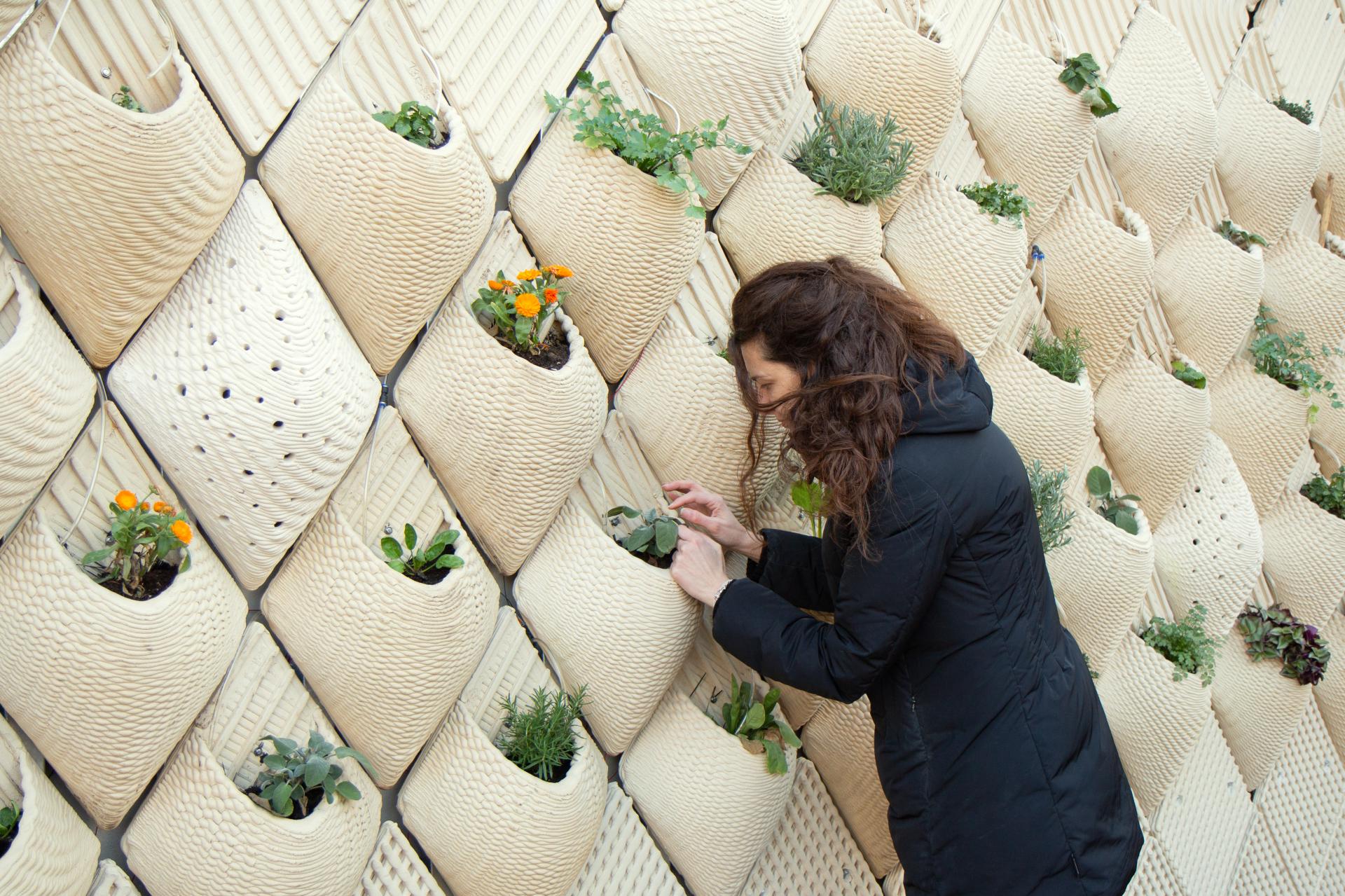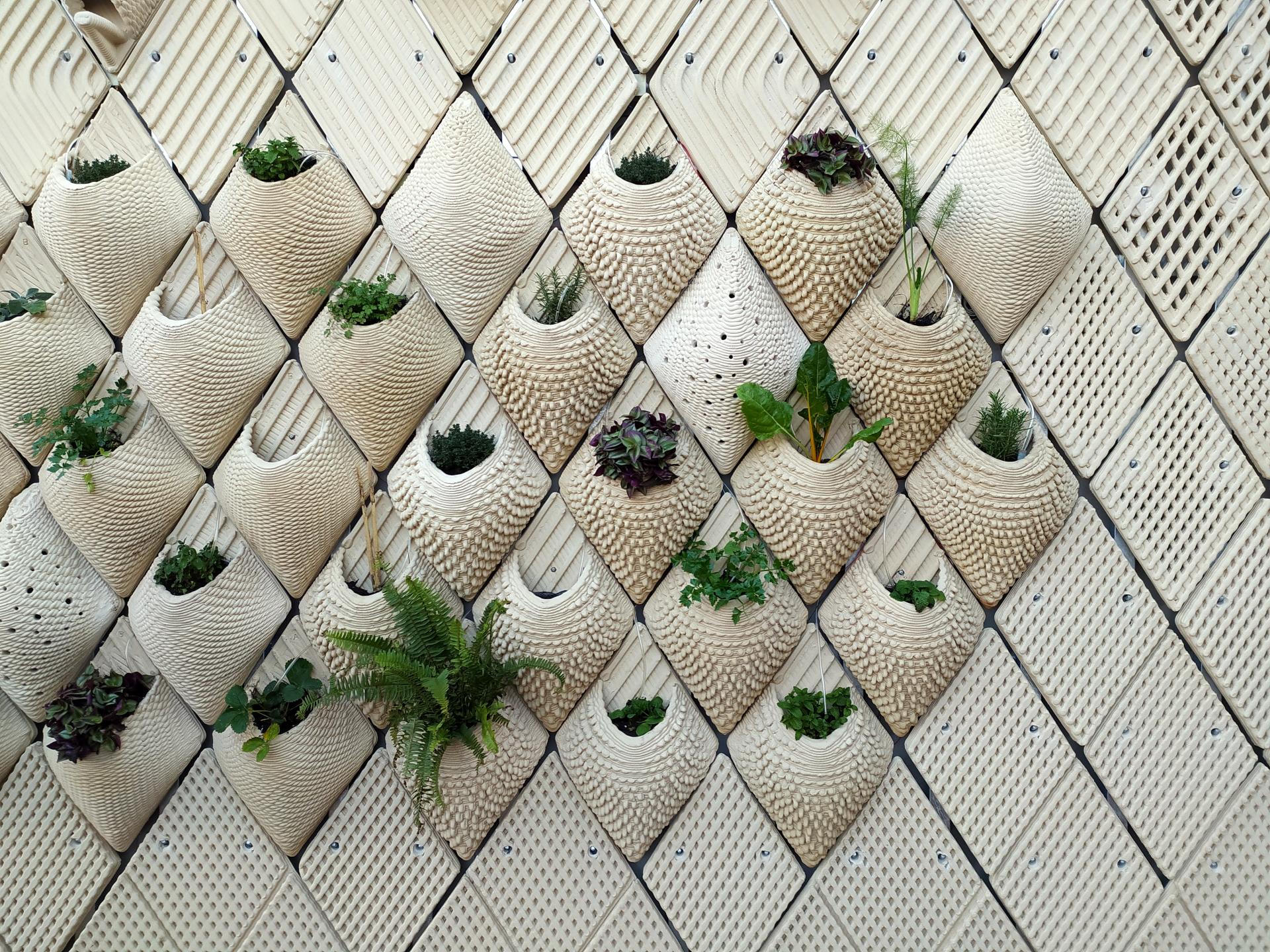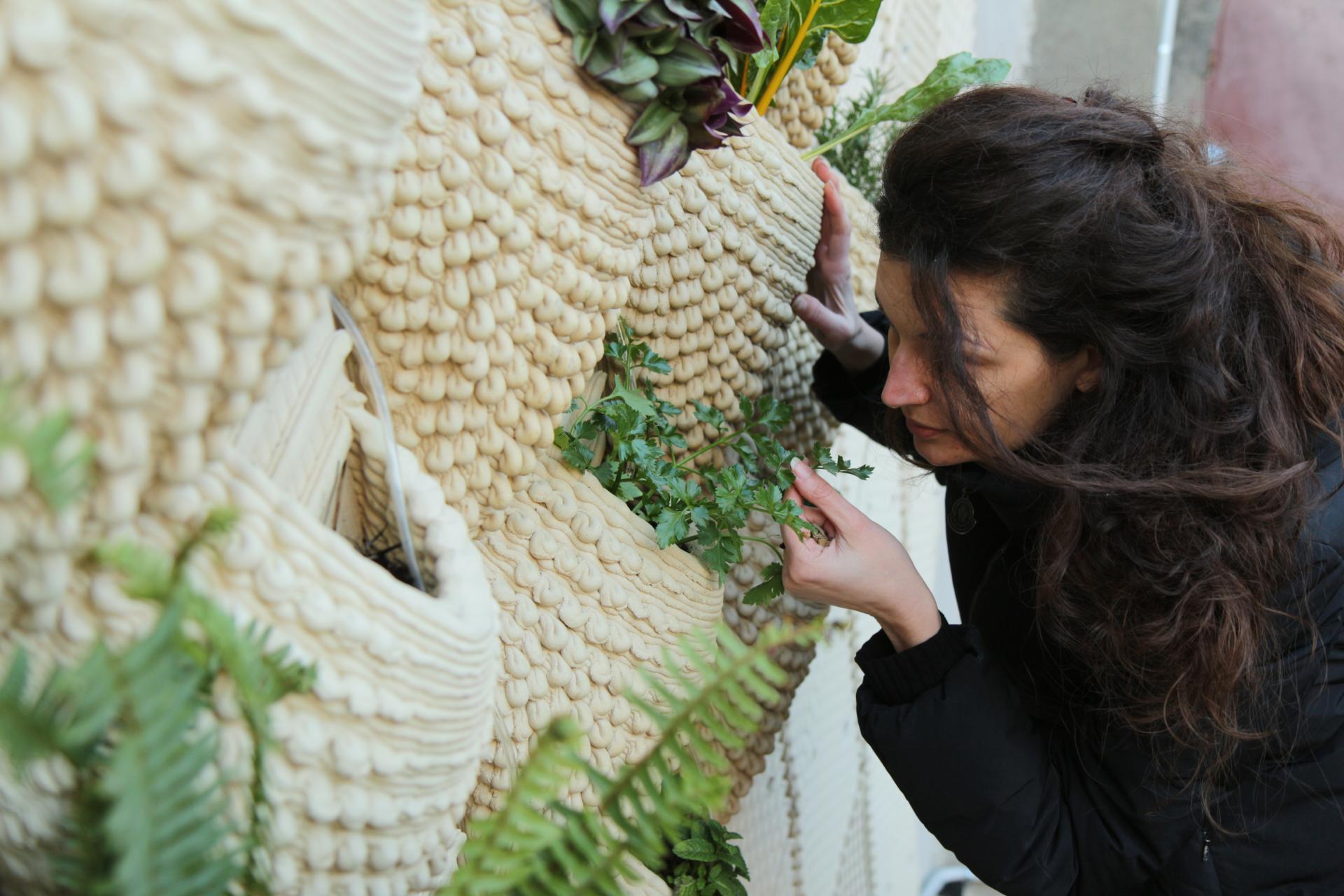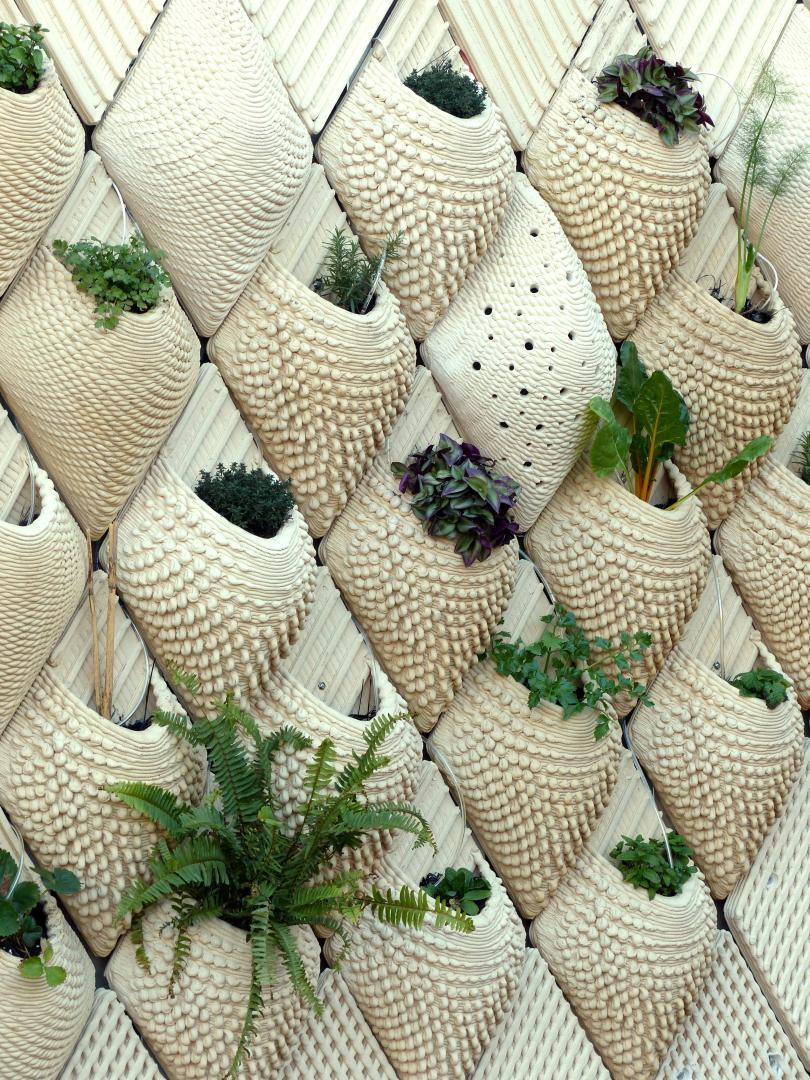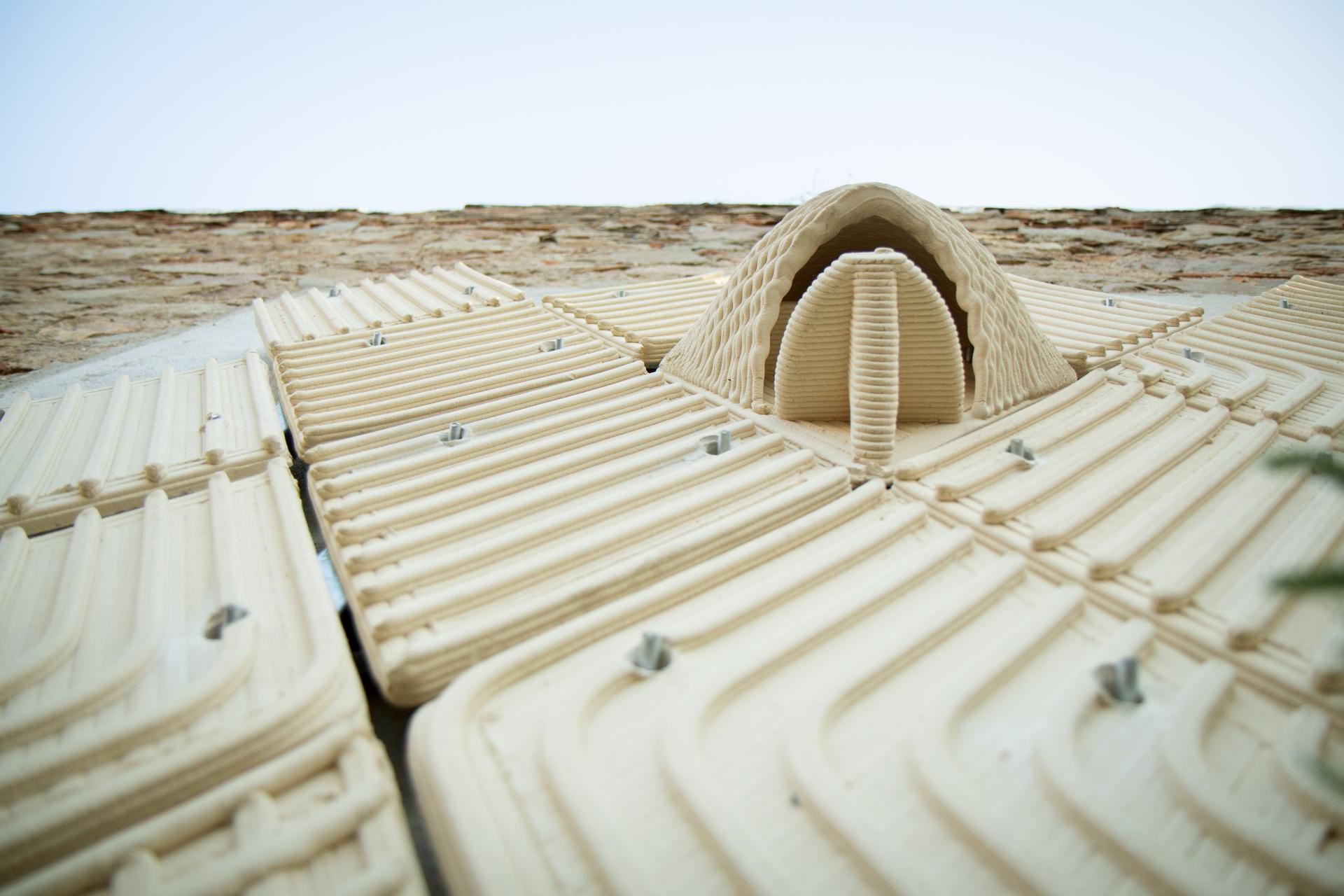CO-MIDA
Basic information
Project Title
Full project title
Category
Project Description
CO-MIDA model uses the urban space to produce food and energy while restoring at the same time the ecosystem and biodiversity of its environment, thus reducing greenhouse gases and optimising air quality. It is co-designed by the citizens to address their needs and it uses 3d printing technologies which permit its adaptation to multiple environmental and urban conditions. Following its bottom approach CO-MIDA has been physically implemented as a vertical garden in two areas of Barcelona.
Geographical Scope
Project Region
Urban or rural issues
Physical or other transformations
EU Programme or fund
Which funds
Description of the project
Summary
CO-MIDA aims to contribute to the construction of a new normality in which deglobalization is prioritised and there is commitment to local production models that are more self-sufficient, sustainable and supportive. In the project’s framework two intelligent vertical modular systems for growing edible plants and flowers have been co-designed together with citizens and installed in two public orchards in Barcelona.
CO-MIDA has multiple goals since, on the one hand, it aims at improving urban microclimate and biodiversity while producing local fresh food for the neighbourhoods. On the other hand it aims to strengthen the social cohesion of the local community and to facilitate the sense of belonging to the public space by involving citizens in all phases of the project’s life cycle (from design to management). Following this bottom-up approach, citizens are called to co-design the urban environment in which they live. As a result, the project fosters a collective imaginarium towards a city of the future where, through participatory design and nature integration, urban spaces are transformed into living systems which restore biodiversity.
As added value, CO-MIDA integrates several important innovations:
- The digital manufacturing technology used (i.e. 3d printing) allows to work with new forms and materials as well as to easily adapt and replicate the prototypes to any environmental and urban conditions respecting at the same time the needs identified by the community.
- The open data co-management system integrates sensors that detect the humidity of the soil and activates the irrigation system only when necessary, saving water;
- Integration of a Biophotovoltaic System that collects electrons produced by bacteria that live near the roots of plants to generate electricity which supplies the humidity sensor, and the energy required for the irrigation system to work, making the co-management system self-sufficient.
Key objectives for sustainability
CO-MIDA aims at the diffusion of a circular model which improves cities resiliency by locally producing food, energy and at the same time by restoring the ecosystem and biodiversity of the urban environment, thus reducing greenhouse gases and optimising air quality. The main objectives in terms of sustainability are:
- to generate a supportive production model based on self-sufficiency and circularity which exploits urban areas, such as building façades or party walls, and organic waste to produce local fresh food
- to increase environmental resilience by promoting implementation of nature-based solutions in the city
- to explore new ways of producing energy locally and with the use of natural living systems such as plants.
To achieve these goals an intelligent vertical modular system has been developed for the cultivation of edible plants and to host local fauna, such as bats, birds and butterflies and installed in two urban orchards. In one of the orchards, the soil for cultivation is feeded with compost made by organic waste produced in the neighbourhoods, and thanks to the integrated bio-photovoltaic system its bacteria are used as a source of electrical energy which supports the operation of the management system. This system detects soil moisture and automatically activates the irrigation system, minimising water consumption and making the prototype self-sufficient.
CO-MIDA’s systems have been digitally fabricated using 3D printing from natural materials (ceramic) that allows an easy replication in different environmental and urban conditions and makes the system adaptable to different scales, dimensions, morphologies and requirements of vertical surfaces of the urban space. All the parts of the modular systems (i.e. ceramic modules, management and irrigation systems and plants) can be completely and easily disassembled to be reused in another urban area with the same or a different configuration.
Key objectives for aesthetics and quality
CO-MIDA aims to strengthen the sense of belonging of neighbourhoods to an urban space used for cultivation which also expresses their creativity. To achieve this goal, the project:
- engaged citizens in an expansive participatory field where they can reflect together with architects and designers and share their thoughts about what is beautiful.
- converted neighbourhoods’ vision and concepts of a vertical cultivation system in a physical object by using innovative digital technologies for design and manufacturing that support the generation of a large variety of design’s options and allow to customise each part of the system according to users’ preferences.
- negotiated with neighbourhoods the location of the system within the site, the shape of the modular elements, the type of plants and flowers to be hosted, the proportion between modules with and without plants to guarantee an harmonic and balanced integration with the existing cultivation areas and spaces.
- encouraged interactions between the system and users and as consequence among the users themselves, by designing an open and simple co-management mechanism which invites everyone to take care of the plants and flowers cultivated in the wall and at same time offers an opportunity for new social connections.
To stimulate a five-sense-experience for all users, inviting her/him for a close exploration of the system, the project:
- proposed a design characterised by visual complexity which calls for visual exploration of the system;
- introduced elements for hosting birds, insects and bats that can create an audible experience with their sounds and noises;
- used plants and flowers that with their aromas can trigger an olfactory experience of the place;
- designed a large variety of new forms and textures that together with plants invite the users to touch the system,
- Tempted users with promotional signals to taste the vegetables and herbs that are growing on the wall.
Key objectives for inclusion
The aim of CO-MIDA is to strengthen local communities through the concepts of solidarity economy and by adopting a bottom-up approach as a transversal idea during the whole project’s development. The main objectives in terms of inclusiveness are:
- To increase social cohesion by promoting the creation of communities around urban cultivation, in public or collective spaces, such as roofs and facades.
- To foster the citizens’ sense of ownership and belonging of the public space involving them in the decisions related to its transformation.
- To encourage the creativity of citizens by involving them in processes of co-design.
- To boost the social inclusion and interactions among people with different genders, ages, cultures and conditions, by offering recreational, educational and therapeutic activities.
- To support people with low incomes by providing them with a space for cultivation and provision of fresh food.
A participative process carried out in six phases, 31 workshops and several bi-weekly meetings has involved the more than 170 people of the district where CO-MIDA’s systems have been installed. The workshops have been important to analyse communities’ needs and which objectives they want to achieve with the project, to design the CO-MIDA system (i.e. defining its size, location, texture and material), to agree on a co-management methodology after the project’s installation, to co-install and co-test the CO-MIDA wall. In order to validate and refine the decisions taken by the community, 2 main events have been carried out with external professionals about architecture, urbanism, botany, green infrastructure and agriculture. Several dissemination events are taking place in the urban orchard each Saturday to share the CO-MIDA experience with citizens from other districts. A handbook explaining the participative process with practical examples from the CO-MIDA experience has also been produced in order to help its replication.
Results in relation to category
The development of CO-MIDA involved both the neighbourhoods of the project’s area and citizens from other parts of Barcelona. More than 100 people participated in 33 cultivation activities promoted in the framework of the project development. 7 raising awareness events about sustainability and nature as a source of well-being for citizens were carried out together with 25 workshops on the topic of living ecosystems including animals and microorganism together with plants. Two main events, LLUM BCN 2021 and LLUM BCN 2022 festivals, attracted more than 1500 people from other parts of Barcelona while the social media channels, the website and the management digital platform reached more than 6660 visits. More than 140 companies took part in the Green Wall event when the system was presented to the general public. Everyday around 30 people interact with the systems and 30 neighbourhoods are constantly taking care of the plants and herbs cultivated. Passatge Trullàs vertical garden was inscribed on the urban garden map during the “Encuentro Estatal de Huertos Urbanos” (i.e. National Meeting of Urban Orchards), held in Barcelona in October 2021. A total of more than 8000 digital and physical interactions were generated in the project contributing to bring people closer to nature.
A surface of 16,5 sqm of a brick wall was regenerated with 300 m3 of soil for cultivation and 57 species of plants, aromatic herbs and flowers, contributing to improve the biodiversity of the area and to provide ecosystem services such as CO2 sequestration, reducing heat island effect, increasing the porosity, food provision and energy production.
The species of flowers selected for their potential of feeding pollinators have already started to attract butterflies in Passatge Trullas and the natural process of colonisation of the modular elements by microbiotas together with the settlement of birds, insects and bats in the fauna hotels is going to happen soon in ConnectHort.
How Citizens benefit
Two local citizens associations, Taula Eix Pere IV and SunSun Love, have been partners of the CO-MIDA project with the fundamental role of building the relationship between the local communities (i.e. neighbourhoods of the area) and IAAC. The co-design methodology developed for CO-MIDA has been organised in 8 steps: Prepare, Understand, Define, Sketch, Decide, Prototype, Validate. Different methods have been used in each phase, such as Icebreakers, SWOT analysis, Affinity mapping, Cognitive Walkthrough, Crazy8, focus groups, etc.
The local community has been involved in all the phases of the process and have co-defined which are the other participants to be engaged in specific activities. Experts in botany, agriculture, biology, design, architecture, urban green spaces together with citizens from other urban orchards have been involved in three main events aimed at evaluating design proposals and creating a transdisciplinary ecosystem of knowledge that enriched the project from different perspectives.
Specific activities were dedicated to more vulnerable groups such as children, older people and people with discapacity to not only understand if the design proposed answers to their needs and desires but also to offer them an experience with nature and design different from their conventional routine.
Free training workshops about the fabrication process with 3d printing were open to all citizens with the objectives of raising the acceptance of digital and advanced technologies and making the participants more familiar with their use by discovering “what is behind the scene”. Practical activities on site related to assembling the different components of the system and installing the soil with plants helped to strengthen the sense of belonging of the neighbourhoods to the solution. Further workshops to collect suggestions of improvement from people who had interactions with the system after its installation, were useful to fine tune the system.
Physical or other transformations
Innovative character
The innovation of the project lies in both the advanced technologies adopted and the participative approach used for co-creating with people in all the phases of the project. Participation is innovative since people were part of the multidisciplinary design team, being co-responsible for all relevant decisions. They abandoned the role of a mere client for playing different roles in the project depending on its phase (e.g. from project managers to architects, urbanists, designers, facilitators, maintenance managers). In a mutual learning approach, they contributed to transfer their knowledge about the place and neighbourhood and received in return specific training workshops about the most advanced technologies used in the project aimed to overcome potential technological barriers.
Technological innovations of CO-MIDA are:
- The 3d printing, one of the most innovative manufacturing techniques, used for the fabrication of the systems’ modular elements (i.e. ceramic pots). It provided the possibility of both realising textures and shapes customised to people’s desires and recreating a habitat suitable for microbiotas’ colonisation.
- The management system, useful for the co-management of the system and the engagement of people remotely. It shares live open data about the energy produced by the biophotovoltaic and the soil temperature and moisture, allowing the irrigation system to be activated automatically and remotely only when necessary.
- The integrated bio-photovoltaic technology, based on microbial fuel cells which extracts energy from the bacteria present in the soil. It makes the system energetically self-sufficient by generating the amount of electricity necessary to feed the sensors of the monitoring system. Its integration in a monitored living green wall is one of the firsts all over the world.
As a whole, the innovation of CO-MIDA lies in a design approach which brings together participation and advanced technologies to address New European Bauhaus goals
Learning transferred to other parties
Studies with recommendations for the project's replication in other cultural and climatic contexts (e.g. in neighbourhoods with security problems of public space, in areas with shorter growing season, etc.) have been developed during the project and are publicly available. Thanks to the modularity of the wall, it can be applied and scaled to different types of public spaces, façades, courtyards and urban orchards.
The documents to manufacture the project and the guidelines for the participatory process, mainly thinked for collectives with experience in these activities such as makers or FabLabs , are open source and available on the project website which also includes a forum for sharing other similar practices of new projects developed from “hacking” CO-MIDA.
To easily fabricate the system all over the world the resulting following files are offered as open source (CC-BY-SA) on both the web of the project and of the IAAC:
- Instructions for building by your own a 3D printing machine, biophotovoltaic and management systems;
- 3D design of the CO-MIDA wall
- Parametric algorithms for customisation of the 3D design to other climates, contexts and morphology;
- Components of the Ceramic mixture, and firing parameters;
- Algorithms for reading sensors values and communicating with the server;
- Algorithm for data management and analysis on the server.
The open source resources will help other communities to replicate and scale CO-MIDA in other sites with a lower cost of implementation, being the experimental development of the project already achieved. Individual makers will be able to implement CO-MIDA in a smaller scale on their balconies or in their homes, increasing the quality and sustainability of their domestic spaces. The new variations of the system designed and shared by other people will help its diffusion and provide cities with a larger range of solutions to reach New European Bauhaus objectives.


